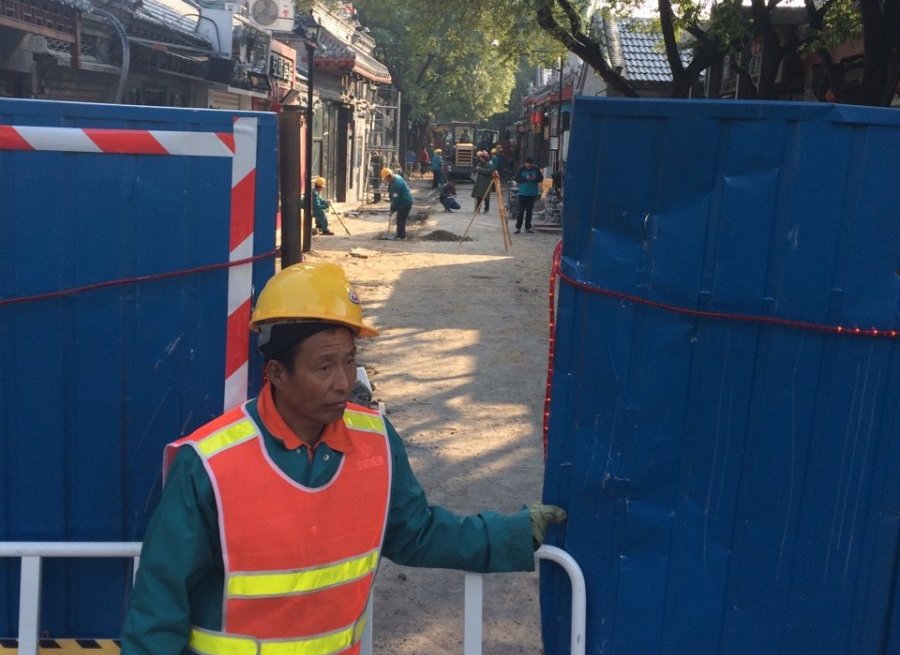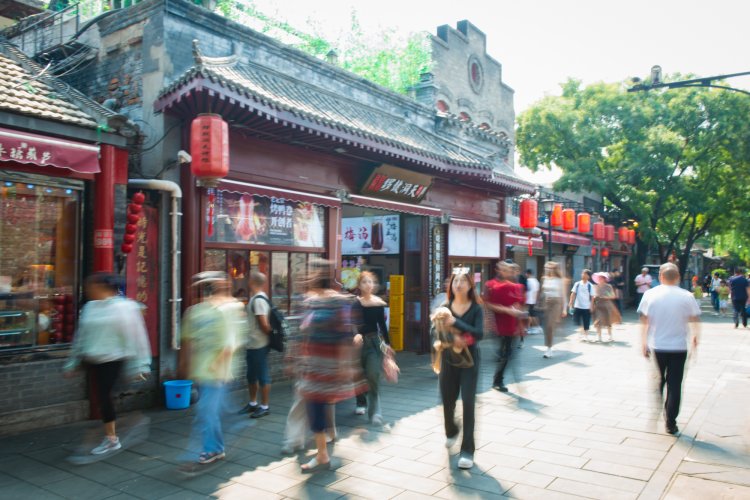On the Future of Nanluogu Xiang
Earlier this week, road work and repairs of underground electrical wiring meant the closure of many sections of the popular hutong Nanluogu Xiang. The latest round of renovations again raises questions about the future development of the neighborhood.
Guidebooks and travel articles still insist it’s a must-see, but many Beijing residents would rather spend a night in a waterbed with a PCP-addled porcupine than wade through the crowds on the bustling lane. No other place in Beijing better recalls the hoary one-liner popularized by American baseball player Yogi Berra: "Yeah ... Nobody goes there no more. It’s too crowded." Earlier this year, local officials reported that on average 30,000 people visit Nanluogu Xiang each day, with that number rising to 50,000 on weekends, and over 100,000 on busy holidays.
Area landlords and some members of the Dongcheng District government continue to see the lane as a potential cash cow, although their milking methods have over the years swung wildly between “gently coaxing forth a light frothy cream” to “Donald Trump giving a Miss Universe contestant a full torso security pat-down.”
I first lived in the neighborhood between 2003 and 2004. There was a time when the alley’s attractions consisted mostly of quaint historic gates, the lasagna at Passby Bar, and a funky T-Shirt shop run by an apparently mad Englishman. But as early as 2007, it was clear that the commercialization gene was in danger of mutating beyond all reason or control.
In 2009, local authorities became concerned about the future development of the neighborhood. As part of a longtime Beijing municipal government policy hostile to “fun,” “spontaneity,” and “nice things,” they proposed replacing the rapidly replicating bars and cafés on the street with more culturally suitable alternatives. As the Beijinger reported in 2009, there would be a new emphasis on the quality, diversity, and "strength of the cultural values" represented by the street.
Yeah, right.
Within a few years, most of the early businesses on Nanluogu Xiang had indeed moved on, colonizing the adjacent hutongs to the east, west, and north of the main lane. Others moved even further afield or closed their doors, forced out by skyrocketing rents. In their place arose branches of competing Churro and FroYo chains, knicknack knockoff shops, and, in 2013, that outpost of capitalist-chic cappuccinos: Starbucks.
There’s real tension here. There are officials and local stakeholders who would like to see the return of small creative businesses and shops, especially those business which promote traditional Beijing culture. But small shops don’t always follow the rules. Starbucks may not embody old Beijing, but their stores do pay taxes. The economic imperatives of development are at odds with cultural preservation.
But ultimately, what is being preserved? Yes, Nanluogu Xiang today is a giant outdoor mall complete with food court-style dribbly snacks. But Is that the worst thing that could happen?
RELATED: Check Ahead for Closures as Gutting Begins on Nanluogu Xiang
Is the fetishization of “authenticity” blinding many of us to the reality that despite the outcry from some quarters over crass commercialization there are obviously thousands of people who do enjoy the street as it is? Or at least as it was before the latest round of street renovations began earlier this week.
I'm about to make a huge generalization, so bear with me. In my experience, those of us from abroad often want to experience the Beijing that was (or what we imagine it used to be). Many Beijingers and visitors to the capital from other parts of China seem excited about the Beijing that could or should be.
There obviously needs to be a balance point between developing the neighborhood and preserving its distinct cultural heritage. If the last decade is any indication, finding that balance point continues to be a challenge. Perhaps once the bandages come off from the latest round of construction, we’ll see if the new renovations are a step in that direction.
Photo: Kyle Mullin


